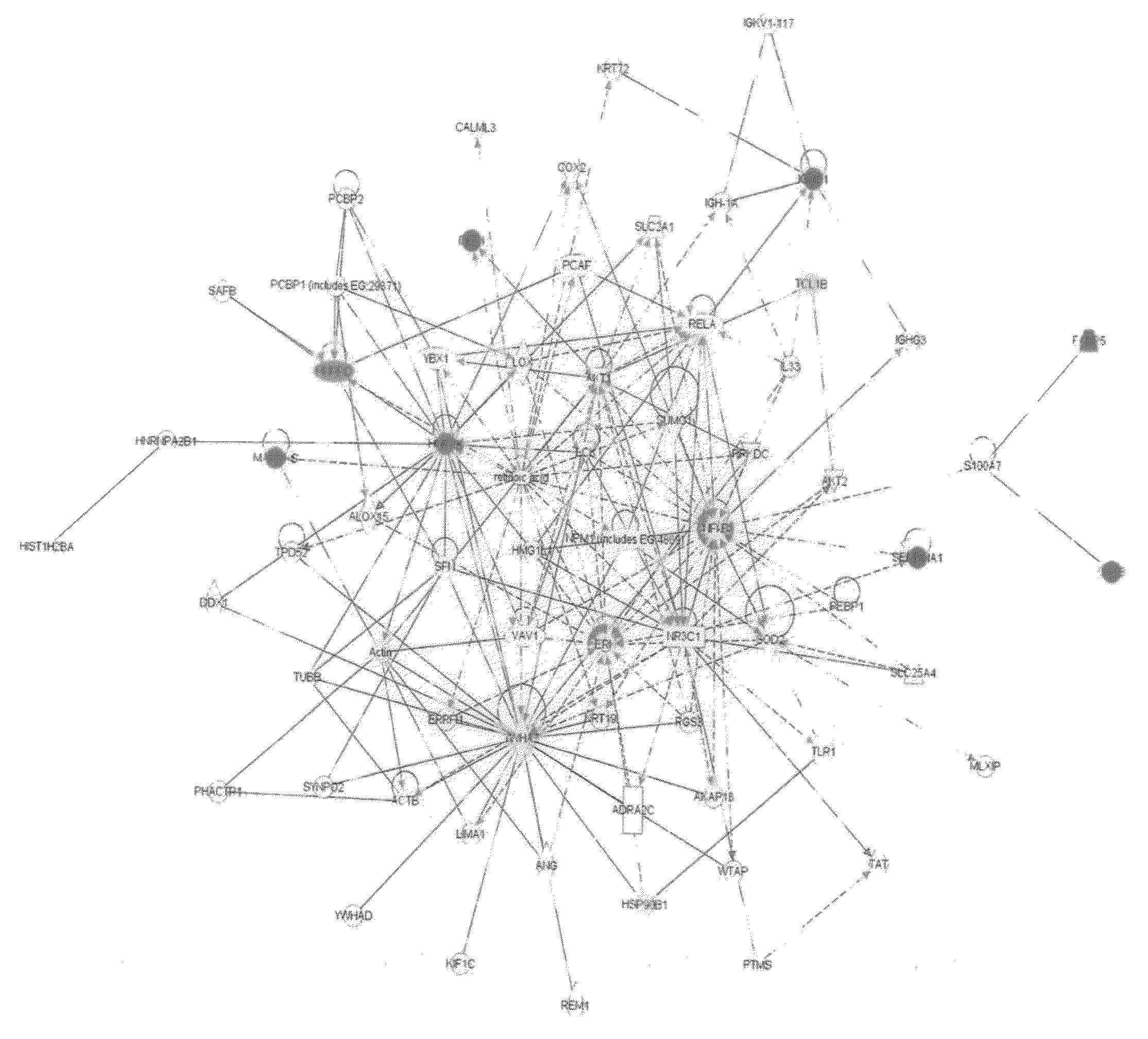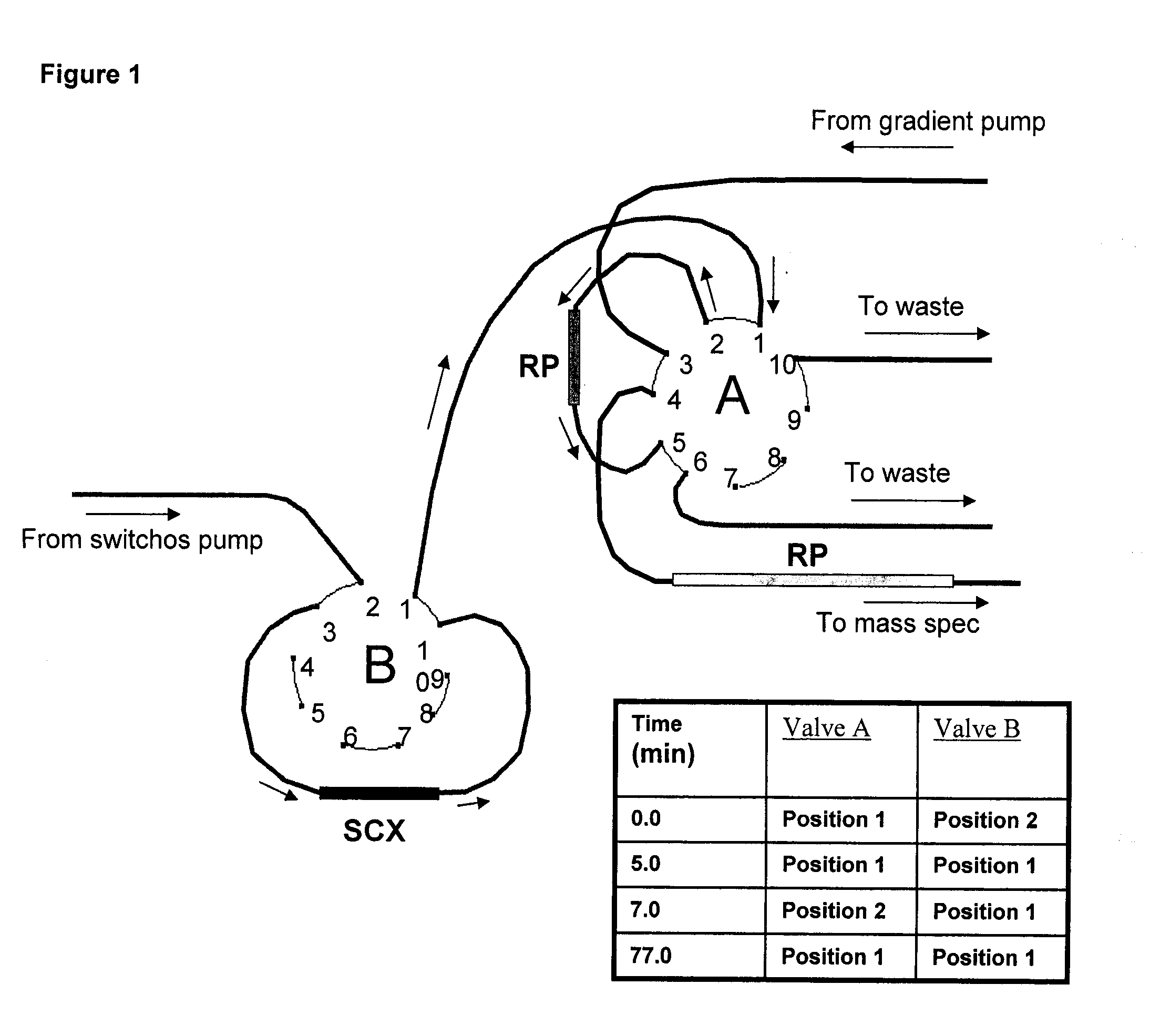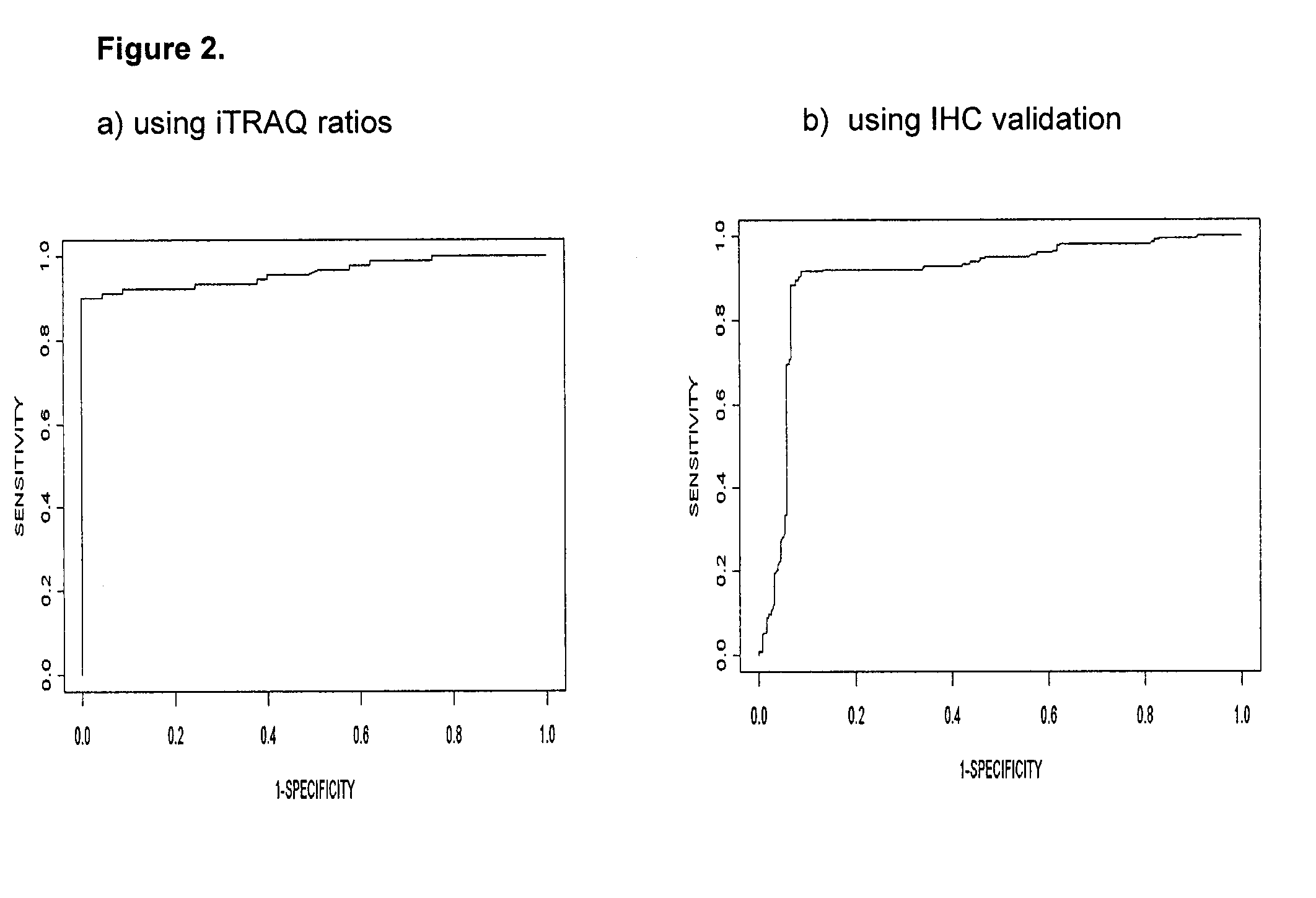Biomarkers for Head-And-Neck Cancers and Precancers
a biomarker and headandneck cancer technology, applied in biochemistry apparatus and processes, biocide, pharmaceutical non-active ingredients, etc., can solve the problems of no clinically established biomarkers to facilitate diagnosis or prognosis, and inaccurate cancer risk prediction
- Summary
- Abstract
- Description
- Claims
- Application Information
AI Technical Summary
Benefits of technology
Problems solved by technology
Method used
Image
Examples
example 1
Samples and Reagents
[0441]Head-and-neck cancer and oral leukoplakia tissues were retrieved from an in-house, dedicated, research head-and-neck tissue bank, with approval from the Human Ethics Committee of All India Institute of Medical Sciences, New Delhi, India. With patient consent, biopsies / excised tissue specimens of oral leukoplakia and surgically resected specimens of HNSCCs, and paired non-cancerous tissues (each taken from a distant site) were collected and banked from patients undergoing treatment at the Department of Otorhinolaryngology, All India Institute of Medical Sciences. Normal tissues with no evidence of cancer (non-paired noncancerous controls) were collected from patients attending the Dental Outpatient Department of All India Institute of Medical Sciences for tooth extraction, after consent of the patients. After excision, tissues were flash-frozen in liquid nitrogen within 20 min of devitalization and stored at −80° C. until further use; one tissue piece was co...
example 2
Strong Cation Exchange (SCX) Separation Conditions
[0445]For the offline 2D LC-MS / MS analysis, each set of labeled samples was first separated by SCX fractionation using an HP1050 high-performance liquid chromatograph (Agilent, Palo Alto, Calif., U.S.) with a 2.1-mm internal diameter (ID)×100-mm length polysulfoethyl A column packed with 5 μm beads with 300 Å pores (The Nest Group, Southborough, Mass.) as described previously (21). A 2.1-mm ID×10-mm length guard column of the same material was fitted immediately upstream of the analytical column. Separation was performed as previously described (21). Briefly, each pooled sample set was diluted with the loading buffer (15 mM KH2PO4 in 25% acetonitrile, pH 3.0) to a total volume of 2 ml and the pH adjusted to 3.0 with phosphoric acid. Samples were then filtered using a 0.45-μm syringe filter (Millipore, Cambridge, ON, Canada) before loading onto the column. Separation was performed using a linear binary gradient over one hour. Buffer A...
example 3
LC-MS / MS Run Conditions
[0447]The SCX fractions from 6 to 30 were analyzed by nanoLC-MS / MS using the LC Packings Ultimate instrument (Amsterdam, The Netherlands) fitted with a 10-μl sample loop. Samples were loaded, using a μl pick-up mode, onto a 5-mm RP C18 pre-column (LC Packings) at 50 μl / min and washed for 4 min before switching the precolumn inline with the separation column. The separation column used was either a 75-μm ID×150-mm length PepMap RP column from LC Packings packed with 3 μm C18 beads with 100 Å pores, or an in-house equivalent packed with similar beads (Kromasil; The Nest Group, Southborough, Mass.). The flow rate used for separation on the RP column was 200 nl / min with the following gradient:
Time (min)01015125145150160162188% B5515356080805Stop
[0448]Samples were analyzed on a QSTAR Pulsar i mass spectrometer (Applied Biosystems / MDS SCIEX, Foster City, Calif.) in information-dependent acquisition (IDA) mode with the scan cycles set up to perform a 1-s MS scan foll...
PUM
| Property | Measurement | Unit |
|---|---|---|
| median time | aaaaa | aaaaa |
| median time | aaaaa | aaaaa |
| median time | aaaaa | aaaaa |
Abstract
Description
Claims
Application Information
 Login to View More
Login to View More - R&D
- Intellectual Property
- Life Sciences
- Materials
- Tech Scout
- Unparalleled Data Quality
- Higher Quality Content
- 60% Fewer Hallucinations
Browse by: Latest US Patents, China's latest patents, Technical Efficacy Thesaurus, Application Domain, Technology Topic, Popular Technical Reports.
© 2025 PatSnap. All rights reserved.Legal|Privacy policy|Modern Slavery Act Transparency Statement|Sitemap|About US| Contact US: help@patsnap.com



